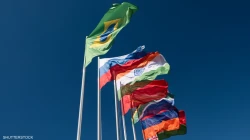Brics aims to prime non-dollar oil trade

Shafaq News/ The potential expansion of the Brics group of developing nations to include Saudi Arabia, Iran, the United Arab Emirates, Argentina, Egypt and Ethiopia has raised more questions about the future of the US dollar's dominance of global energy trade.
The addition of the new members would increase Brics' share of global oil production to 42% from 20%. But while interest in a system that doesn't rely on the dollar may be growing, it is likely years away from being viable — and unseating the dollar's dominance of energy trade could be particularly difficult.
Western sanctions on Russia have already given impetus to the trend, with India settling trades in UAE dirhams, Chinese yuan and, to a lesser extent, local rupees to avoid Indian banks’ concerns about dollar transactions. Pakistan has also settled deals in yuan, and India bought 1 million barrels of crude from the UAE settled in rupees. There has also been speculation that Saudi Arabia could increasingly switch to non-dollar currencies for its huge oil trade — although signs so far are that Riyadh will proceed cautiously.
Given Brics ambitions to “de-dollarize” their growing bilateral trade flows, the “Bricspansion” — as former Credit Suisse analyst Zoltan Pozsar coins it — could increase the odds of emulation. Certainly, more are considering non-dollar payment options. Some like China, Russia and India are testing their own central bank digital currencies (CBDCs), with a view to joining the mBridge project, sometimes dubbed “Brics coin.”
This new payment system — backed by of China, the UAE, Thailand and Hong Kong — aims to create a digital network of corresponding central banks that does not run through the global dollar system.
Sweeping Western sanctions against Russia, particularly the freezing of central bank reserves, have prompted other countries to look at ways of immunizing themselves from such threats. Yet many still hold assets and reserves in US dollars, for lack of viable alternatives.
There’s much talk about the yuan as an alternative currency given the size of the Chinese economy and volume of Chinese trade. Beijing has sought a more internationalized yuan for years, but keeps balking at the trade-offs involved, notably the surrender of capital control. For now, the yuan is largely used for trade between China and counterparties, not in trades between other countries.
The Saudi and the UAE currencies are also pegged to the dollar, limiting their flexibility — holding large volumes of yuan would complicate that peg.
US sanctions have had a more practical impact, forcing both Russia and Iran — existing and potential Brics members, respectively — to shift to alternative currencies for oil trade. Trades are still priced in dollars, but transactions are then converted and settled in other currencies.
China is the largest buyer of Iranian oil at the moment and is reportedly paying for it in yuan. Russia is also accepting payment in Chinese yuan, which, unlike the Indian rupee, is fully convertible to gold. Other steps toward yuan-denominated energy trade have been limited. Two yuan-settled LNG deals with China have involved TotalEnergies and Abu Dhabi National Oil Co., again seemingly converted from the dollar.
Russia's booming oil trade with India also faces currency hurdles that Brics expansion doesn't have an answer for: Russia does not want an influx of rupees, and India is reluctant to trade in yuan, the currency of its regional rival.
Another 14 countries have applied for Brics membership, including oil and gas producers like Algeria, Kazakhstan and Kuwait, potentially providing further momentum to de-dollarization efforts. However, the dollar's position in the oil trade is deeply embedded — hedging, for instance, revolves around the dollar, and alternative hedging mechanisms like in China are in embryonic stages. Still, even if alternative currency deals develop only on the margin, the CBDCs pushed by Brics central banks could lead to a more fragmented and opaque oil market, and creeping regional displacements of the US dollar over time. Argentina, for one, is changing its trade invoicing with China from US dollars to yuan, for example. The yuan became the most widely used currency for cross-border transactions in China in March, overtaking the dollar for the first time. But if Beijing is not willing to liberalize its financial system, it will limit the confidence and ability of other countries to use the yuan more widely in such transactions.
